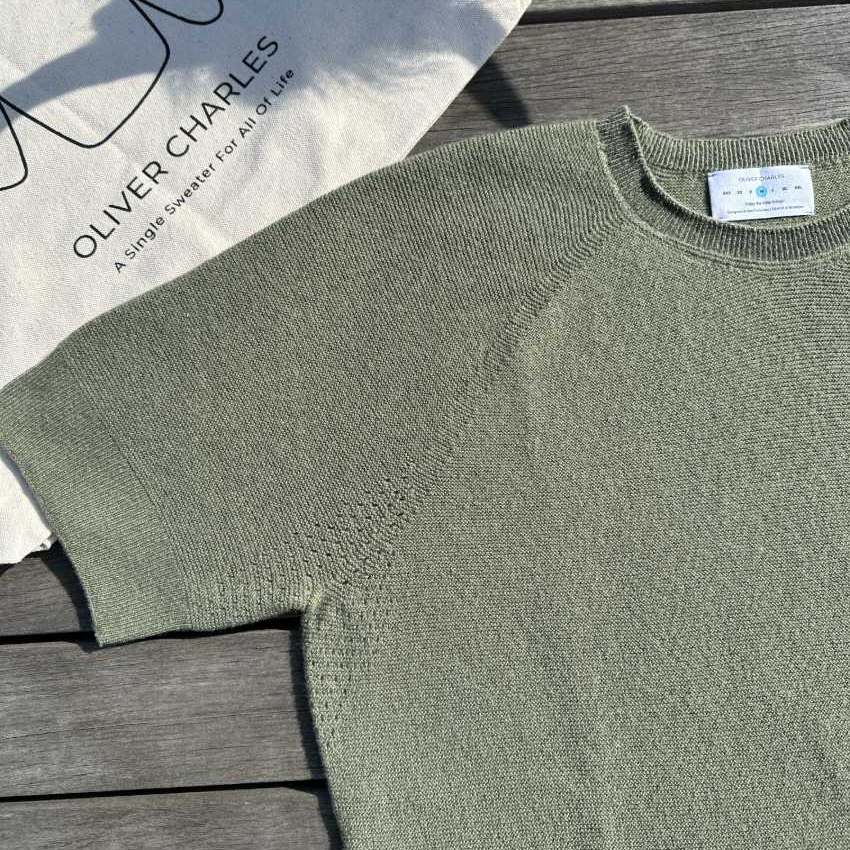A Minimalist Wardrobe Helped Me Manage My Chronic Illness
How curating a minimalist wardrobe helped me feel at ease with my body and manage my chronic illness.
October 10, 2024
By Samantha Slupski
You Can Have It All: Comfort, Sustainability, And Style
Welcome to the second blog in my 3-part blog series about having a sustainable wardrobe that doesn’t sacrifice personal style, comfort, or values.
This blog is about the benefits of a minimal wardrobe for those with chronic illnesses or other sensory or physical needs.
----------
As someone who manages chronic illness and health struggles, curating a minimal closet that feels stress-free to walk into has been key. Clothing and shopping decisions aren’t places I can often afford to spend energy.
Switching to a more minimal, sustainable wardrobe and opting for timeless, adaptable, and comfortable pieces helps me feel better in my body. I created a more accessible closet to get dressed in even on the days I don’t feel as good.

Challenges Chronically Ill People Face When Finding Clothes
For many chronically ill people, getting dressed can come with a unique set of challenges and obstacles such as comfort, accessibility, and affordability.
One of the first things that I always have to prioritize is comfort. Certain materials and fits can exacerbate physical discomfort or even trigger pain. For me, clothing needs to be soft, breathable, and easy to wear for extended periods.
This often means choosing natural fabrics that allow the skin to breathe and don't cause irritation–which is why Oliver Charles All-Season Sweaters work so well for me. The soft and breathable yak wool allows for wear without irritation.
For some, there may be specific needs such as non-restrictive waistbands or seamless designs to avoid constrictions, especially on sensitive skin or around areas affected by their condition. Oliver Charles 3D-knitting technology creates clothes without seams, creating unique, sensory-friendly pieces.
In addition to comfort and accessibility, affordability is a consideration many chronically ill people face due to medical expenses. This makes it essential to find durable, versatile pieces that can be worn repeatedly without significant wear and tear.
While sustainable fashion can be initially more expensive, its longevity and quality can make it a worthwhile investment in the long run.

Finding The Intersection: Sustainable Practices In Fashion And Chronic Illness
When I’m looking for a piece to add to my wardrobe, I’m always trying to find the balance between feeling fashionable within my personal style and making sure I am choosing pieces in line with my values.
Because many sustainable brands focus on creating adaptable designs that provide comfort and ease, I know when I shop with a sustainable brand, I’ll likely find pieces that sit within these intersections.
A plus, too, is that sustainable fashion often emphasizes comfortable, natural materials like SeaCell, organic cotton, and linen, which can improve the quality of life for those living with chronic conditions.

The Concept Of Minimalist Wardrobes
I was initially hesitant about minimalist wardrobes, a concept I discovered through sustainable fashion influencers on Instagram. However, I realized that a capsule wardrobe could be freeing rather than limiting. Simply put, a capsule wardrobe is a carefully selected collection of high-quality clothes, with a limited number of versatile pieces that can be easily combined to create various outfits.
I enjoy color-blocking with neutrals like brown, green, black, and cream. The main advantage of a minimalist wardrobe is reduced decision fatigue, making my daily routine more efficient and less stressful.
Investing in fewer, high-quality pieces saves money in the long run, encourages mindful consumption, and allows me to focus on my personal style, leading to greater confidence and self-expression.

Why Minimalist Wardrobes Work For People With Chronic Illness
I find that a minimal wardrobe has been very beneficial while managing my chronic illnesses. The simplicity and ease of a minimalist wardrobe can help alleviate stress and make everyday tasks more manageable.
With fewer, but more versatile clothing items, the physical effort and time spent on choosing outfits or doing laundry has been significantly reduced. When I have a pain flare, the last thing I want to do is reach into my washing machine or fold laundry.
Investing in high-quality pieces that are comfortable, easy to put on and take off, and made from skin-friendly materials also makes them easier to clean and contributes to overall physical comfort. This kind of wardrobe can not only cater to the specific needs of individuals with chronic illnesses but also enhance the day-to-day life of all kinds of people.

How To Create A Minimalist Capsule Wardrobe
When I built my first capsule wardrobe, here are the practical tips I followed, specially tailored to individuals with chronic illnesses:
- Begin with a closet clean-out: Start by decluttering your current wardrobe. This process involves sorting through each item and deciding whether to keep, donate, or discard it. Consider whether each piece adds value to your life and if it is comfortable and easy to wear.
- Prioritize comfort: Comfort is crucial when living with a chronic illness. Choose clothing items that are soft, breathable, and do not restrict movement. Consider features like front fastenings, adjustable straps, and easy-to-use closures that can accommodate potential limited mobility or strength.
- Stick to a color palette: A consistent color palette can make mixing and matching pieces easier. Neutral colors or your favorite colors are a good place to start.
- Consider fabrics and textures: Opt for natural, breathable fabrics that are gentle on the skin, like cotton, bamboo, or hemp. Avoid materials that can cause irritation or discomfort.
- Organize your wardrobe efficiently: Make sure all your clothing items are visible and accessible. This can help reduce the time and effort spent on selecting an outfit.
- Quality over quantity: Invest in a few high-quality, durable, and versatile items rather than a large quantity of cheaper items. This can save money in the long run and is also more sustainable.
By using these tips, I created a capsule wardrobe that not only helped me hone in and chisel my personal style but also met my specific needs to enhance my day-to-day life.

Final Thoughts
The simplicity of a minimalist wardrobe greatly benefits individuals with chronic illnesses. The fewer, but more versatile clothing items reduce the time and physical effort spent on selecting outfits and doing laundry.
High-quality pieces that are easy to put on and take off enhance physical comfort.
My personal journey with a minimalist wardrobe has been transformative. It has simplified my daily routine and saved time and energy. The clothes I wear contribute to my comfort and joy, rather than causing discomfort.
This minimalist approach to fashion is beneficial for everyone, not just those with chronic conditions.
It encourages mindful consumption, enhances personal style, and can lead to financial savings and environmental sustainability.
I urge everyone to consider the value of a capsule wardrobe. It's about making conscious choices that enhance your life, not about deprivation.
Remember, fashion should be comfortable and a form of self-expression, not a stressor.
If you believe that every good wardrobe starts with owning less and owning better, consider buying yourself an OLIVER CHARLES sweater.
Shop NowSustainable Sweaters For Self-Care
How investing in a sustainable wardrobe benefits our mental health.
Read more7 Day Challenge: Yak Wool Is Perfect For Winter And Spring
Testing the Oliver Charles All Season Boat Neck in classic Wyoming winter activities.
Read moreSeasonal Minimalist Wardrobe Is Out
All you need is one Oliver Charles sweater for all seasons.
Read moreThis Yak Wool Sweater Elevated My Wedding Weekend Wardrobe
How I stayed comfortable and stylish in a sweater during my wedding festivities.
Read more



